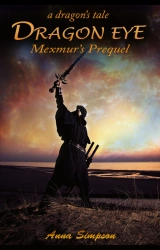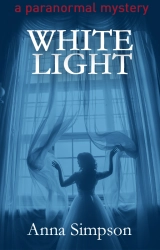Each person we meet is very different, even if at first they fall under an umbrella like lawyer, brunette, or teen. As writers we can use this to our advantage. But in our case,  we want each character as different as possible.
we want each character as different as possible.
One way to keep them sorted is to add tags.
• Names must never start with the same letter or sound similar. The more different they are the better. If you can chose one with heritage undertones or deeper meanings, it’s all to the good.
• Appearance—it’s the differences between the cast members that make each player stand out. So if everyone has brown eyes but one, she’ll be the tagged with blue eyes, ignoring the rest. Another may have a dimple, a limp, or a crooked smile. There’s more. What about—scuffed boots, torn jeans, creases as sharp as a blade, skin scrubbed pink, scruff—these hint at a characters very nature.
• Voice—is as much about what they think as what they say. Like all of us, their words may have a deeper meaning than what comes out of their mouth. Their thoughts and body language might contradict what they say. For example if they lie constantly, let them think the truth and speak the lie. Let the contradictions flow, favorite sayings flourish, impatient interruptions break free.
• Behavior
o External movement–in one case it could be the stance, always at attention. Where another could be the constant tick above their left eye. Incorporate mannerisms when using stage direction to indicate who they are without outright saying it.
o Internal Movement—includes inner thoughts, visceral reactions. How a character feels is not always how they interact. It might be a shock to see an old girlfriend in wheelchair when she used to be a tennis pro. The raw emotions fight to get out as they politely chat. Because we can slow time down to a crawl, we can let the reader in on the character’s inner thoughts. Let them witness him working out how to bring up the chair, then eventually changing his mind. It hurts to much. He doesn’t want to know.
When a character is confronted by an action, they will respond expecting a specific result. Give them core qualities that lead them to unique actions/reactions. Not all people respond the same way. It’s usually the odd man out that will bump up the tension.
• Body Language—Keep in mind when using stage direction that much can be said without the character speaking a word. How they stand, sway, fold their arms  can say it all.
can say it all.
Hopefully this will give you some ideas on how to make your characters not only unique but easy to keep track of. Play with it. If you have other suggestions please share. I love to read your thoughts.










Some really good points to think about, thanks, Anna. And the last pic was absolutely perfect too. I love the contradictions idea (between thoughts and words) – that’s a good one!
p.s. if you’re thinking of responding on my blog, I won’t have a post up till the end of the week 🙂
I’ll drop by, but it might be next week. Fingers crossed that life doesn’t distract me. 🙂
If I ever decide to write a book I will definitely ask you for help. You always give the best advices. 🙂
Ruty @Reading…Dreaming
Thanks, I try 🙂
I never thought about characters as having tags before but now that you point it out I can totally see where you are coming from. Those little slights, nuisances, or appearances, really do make a character stand out.
I think so, and because of them readers enjoy the story instead of wondering who’s who. 🙂
It’s very important to make each character unique, just as we are all unique. 🙂 This is wonderful advice, Anna!
Thanks, Chrys 🙂
Some great tips! I have a problem with keeping my notes in order. And first drafts usually have everyone’s name matching in some way. Thank goodness for Words find/replace feature!
It does come in handy hehehe
I really liked this list. Names especially. I hate reading a novel with two or three characters having the same letter starting their names. Confusing, like watching something on TV where they have two blonds and I have to try and remember which one is which. Not something I didn’t already know, but very good reminder. And since I’m revising right now, this is the kind of reminder I need! And like someone mentioned above, I love find/replace! Thanks for commenting on my blog earlier! lisabuiecollard.com
It is the best tool evah! 🙂
That’s a great quick summary, Anna. I agree with every point.
Thanks, nice to know I’m right all the way around 🙂
Great information and reminders! I’ve had to change names before because of too many that were too similar.
And your readers thank you I’m sure. 🙂
Great advice. I liked your examples to use. My crit group jumped on me when I had two characters named Randy and Roger. Grrrr. I HAD to change one of them. So now they are Randy and Emmett…and I like that better anyway!!
Excellent 🙂
These are some great points you mentioned. I like playing around with my character’s names. I’m always hunting Google and baby/name meaning sites to search for names that sums up/compliment/contrasts my character’s personalities or roles in the story.
I’m sure doing that make the characters stand out even more. 🙂
Thanks for the useful tips! I know I find it confusing when characters have similar names or don’t have anything about them that makes them different from the other characters.
It does make things more difficult 🙂
Yes..all are important and so true you can show a characters reactions or feelings by their stance or crossing their arms or raising an eyebrow…awesome post!
Thanks, Kim 🙂
Excellent advice. I know using names that are frustratingly similar works for George R.R. Martin, but it drives me nuts when I have to wonder who is who. Body language is also a great way to really show what your characters are feeling. Excellent tips!
The inner thoughts vs dialogue is my favorite if I’d have to pick. 🙂
Great points! I never thought of this issue before, but it can be confusing when you can’t keep the characters straight because they’re too similar. Makes for a boring book when everyone blends together, so your points really help!
Thanks, Terri 🙂
Excellent points! Is “Selling Writer” a book?
Yes a book by Dwight V. Swain. Someone that I’ve come to depend. 🙂
Have you read any of Larry Brooks’ craft books? He’s on my blog today, if you’re interested.
No I’ve not. But I’ll drop by to check him out. 🙂
Just found it. I knew it sounded familiar. Instantly recognized the cover. Buying it now. Thanks, Anna!
No problem. Glad to help you spend money. hehehe
Pingback: Revision 2: Early Stages | Elements of Writing